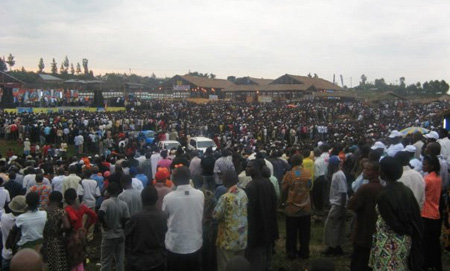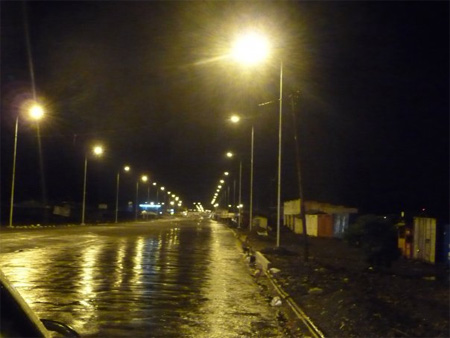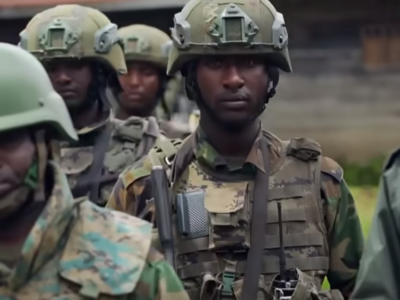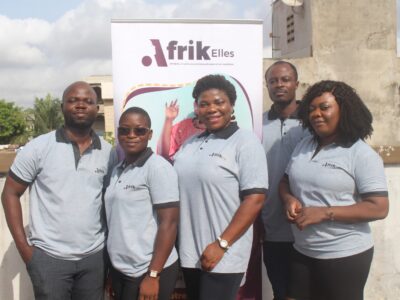On June 30th, the Democratic Republic of Congo celebrated the 49th anniversary of its declaration of independence from Belgium , as well as the country's first leaders: President Joseph Kasa-Vubu and Prime Minister Patrice Lumumba.
Independence Day was celebrated all throughout the country, but it was in the eastern city of Goma (the capital of North Kivu province) that the official festivities took place with the participation of President Joseph Kabila, as well as the presidents of a number of other countries. Here are a few bloggers’ reactions to this historic anniversary, celebrated in a city that not long ago was a war zone.

Photo by Patrick Butsapu
Colette Braeckman [FR], a Belgian journalist specializing in Central Africa, wrote about holding the celebrations in Goma:
Voici moins d’un an, qui aurait cru que l’indépendance du 30 juin, date mythique s’il en est, serait célébrée à Goma ? A l’époque, le chef rebelle Laurent Nkunda recevait toutes les télévisions du monde et devenait une star médiatique, entrant en concurrence avec les deux chefs d’Etat des pays concernés, le président Kabila et son homologue rwandais le président Kagame.
A l’époque, la peur régnait dans de vastes zones du Nord Kivu, à la merci d’attaques du CNDP […]
At that time fear reigned in vast stretches of North Kivu, at the mercy of the CNDP attacks[…]
For Dawn Hurley, an American expat in Goma who blogs at From Congo, the choice was risky:
It is not the most logical place to invite hot shots of all sorts to celebrate this grand holiday. It is an unruly city on the very edge the country. But it precisely this reputation as the Wild west (or rather Wild East) of Congo, that has led the President to choose to celebrate here.
For Colette Braeckman, celebrating the Independence in Goma has a strong significance:
Malgré les peurs des uns, les critiques des autres, il faut reconnaître que célébrer l’indépendance à Goma, hier terrorisée, assiégée et qui se sentait oubliée de Kinshasa, est un symbole fort. Le symbole d’un pays qui a entamé sa reconstruction et récupéré son contrôle sur toutes ses provinces, […] le symbole d’un géant convalescent, qui vacille encore un peu, mais qui, de manière décidée, s’est remis debout…
Dawn of From Congo also commented on the works happening around the city in preparation for the official festivities:
So for the past month Goma has been a giant dust bowl. The roads of Goma, which are perpetually in a ridiculous state of disrepair, have been dug up, marked off, and attacked with a variety of roadwork tools. Road workers have appeared out of nowhere and worked day and night over the past month, to turn Goma into a presentable city.
Boubol, the Goma correspondent for the popular Congoblog [FR], also wrote about Goma's makeover for the celebration (including some photos of the works):
« Je n’ai jamais vécu une telle situation à Goma, qui donne l’impression de se trouver dans une cité industrielle » s’exclame Mzee Paul, un sexagénaire, rencontré le long du boulevard Kanyamuhanga. Ce tronçon, sur lequel s’effectuera le défilé, revêt une nouvelle couche de bitume. C’est depuis la dernière éruption survenue en 2002 qu’il était dénué.
Nombreux sont le badauds qui passent leurs temps admirer les pylônes qui poussent depuis peu sur les routes de la capitale touristique. Au total, 600 réverbères éclaireront Goma d’ici le 30 juin, à en croire un des superviseurs des travaux: « La ville de Goma sera la ville la plus éclairée, après la ville de Kinshasa qui compte seulement 300 pylônes en bon état » a-t-il ajouté.
Many are the idle onlookers passing their time admiring the new street lights now mushrooming on the roads of this touristic capital. In total, 600 street lights will illuminate Goma until the 30th of June, according to one of the supervisors of the works: « The city of Goma will be the most brightly lit city, after the city of Kinshasa that only counts 300 street lights in a good state » he added.

Photo by Yvez Zihundula
However, Boboul wonders about the long-term permanence of the makeover:
S’ils se réjouissent en voyant ces travaux, les habitants de Goma ne se font pas d’illusion. Il faut attendre de voir s’il s’agit bien d’un élan de reconstruction ou si ce n’est qu’un embelissement temporaire, le temps de la fête.
Apparently the Independence festivities included some fireworks, which some people mistook for shooting as shown by this story at From Congo:
Argentine and Mapendo (two of the SHONA women) spent last night trying to decide where to hide. They heard shooting and assumed the town was being attacked. […]
In fact it was fireworks. Yesterday was Independence Day in Congo and a fireworks display ran for at least half an hour last night. I couldn't see the fireworks from my house, and apparently Argentine and Mapendo couldn't see them from their hiding spots. But we could all hear the explosions, and I have to say that it was as long and impressive sounding a display as I have ever heard.
I, for one, am not suprised the a fireworks display in a region which is still a war-zone, would scare the living daylights out of people. They announced it on the radio beforehand but many people, like Argentine and Mapendo, didn't hear the warnings and were left to assume the worst.
Goma-based journalist Yves Zihindula [FR], who also noted the impressive works happening in his city, offers a bit of a pessimistic reflection about the Congo after 49 years of indepence:
Ceux qui ont vécu les années après le 30 juin 1960, parlent des bonnes choses du Congo et disent par exemple qu’un zaïre (monnaie locale de l’époque) équivalait à plus d’un dollar américain. Normal qu’un jeune de mon âge ait difficile à les comprendre. Pas de système d’éducation fiable, pas d’eau potable, pas d’électricité, pas de routes dans la plupart des localités… voilà ce que nous vivons depuis notre enfance.
49 ans après l’indépendance, quel bilan faire ? Qu’est ce qu’il faut que je réponde ? Je n’ai rien vécu jusque là. J’attends vivre… et ferais un bilan le moment venu.
49 years after the independence, what assessment can we make? What can I say? I haven't lived anything until now. I'm waiting to live… and then I'll make my assessment when the moment comes.
In a similar vein, Espérance-Francois Bulayumi at Mbokamosika [FR] wonders:
Devrions-nous organiser ce mardi 30 juin 2009 une fête pompeuse pour célébrer la journée commémorative du 30 juin dans la situation où se trouve le pays actuellement?
John Passou offered this reflection at the blog Aujourd'hui c'est Aujourd'hui [FR]:
L’indépendance du Congo est à reconquérir. Corriger aujourd’hui les vices du régime Mobutu, ce n’est pas, comme d’aucuns s’imaginent, l’œuvre d’un jour. Ce doit être l’œuvre d’une politique de longue haleine, habile et circonspecte. La domination néocoloniale a plongé la société congolaise dans un pourrissement tel qu’il nous faudra des années pour la purifier.






